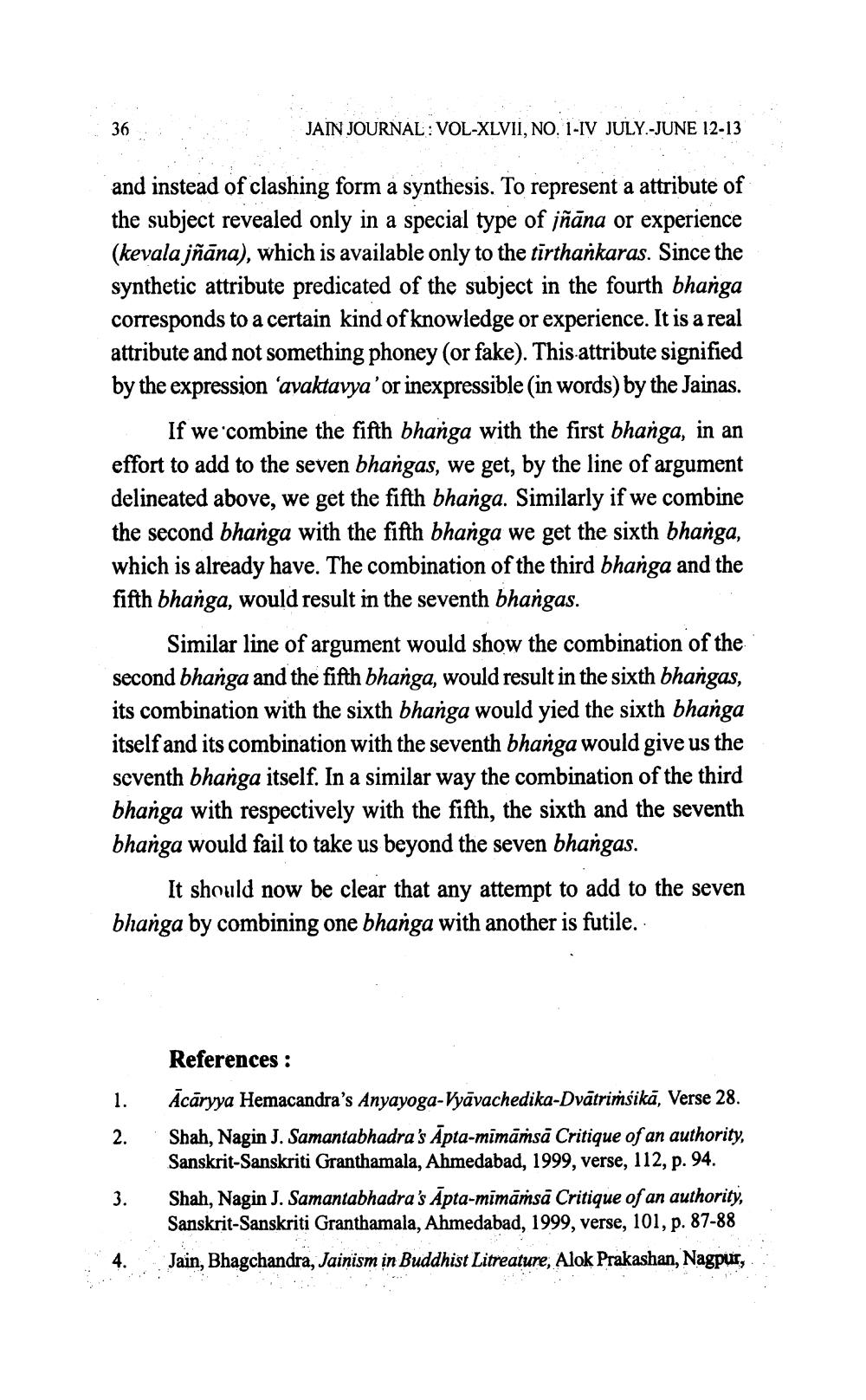________________
a 36
JAIN JOURNAL: VOL-XLVII, NO. 1-IV JULY.-JUNE 12-13
and instead of clashing form a synthesis. To represent a attribute of the subject revealed only in a special type of jñāna or experience (kevala jñāna), which is available only to the tīrthankaras. Since the synthetic attribute predicated of the subject in the fourth bhanga corresponds to a certain kind of knowledge or experience. It is a real attribute and not something phoney (or fake). This attribute signified by the expression ‘avaktavya'or inexpressible (in words) by the Jainas.
If we combine the fifth bhanga with the first bhanga, in an effort to add to the seven bhangas, we get, by the line of argument delineated above, we get the fifth bhanga. Similarly if we combine the second bhanga with the fifth bhanga we get the sixth bhanga, which is already have. The combination of the third bhanga and the fifth bhanga, would result in the seventh bhangas.
Similar line of argument would show the combination of the second bhanga and the fifth bhanga, would result in the sixth bhangas, its combination with the sixth bhanga would yied the sixth bhanga itself and its combination with the seventh bhanga would give us the seventh bhanga itself. In a similar way the combination of the third bhanga with respectively with the fifth, the sixth and the seventh bhanga would fail to take us beyond the seven bhangas.
It should now be clear that any attempt to add to the seven bhanga by combining one bhanga with another is futile.
1. 2.
References : Ācāryya Hemacandra's Anyayoga-Vyāvachedika-Dvātrissikā, Verse 28. Shah, Nagin J. Samantabhadra's Āpta-mimāṁsā Critique of an authority, Sanskrit-Sanskriti Granthamala, Ahmedabad, 1999, verse, 112, p. 94. Shah, Nagin J. Samantabhadra's Apta-mimāṁsā Critique of an authority, Sanskrit-Sanskriti Granthamala, Ahmedabad, 1999, verse, 101, p. 87-88 Jain, Bhagchandra, Jainism in Buddhist Litreature, Alok Prakashan, Nagpur,
4.




